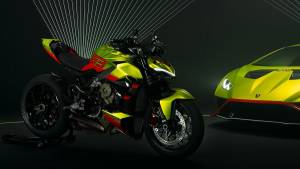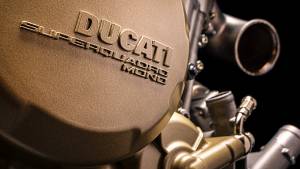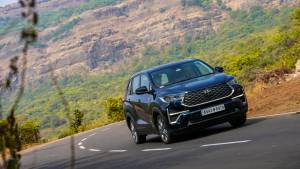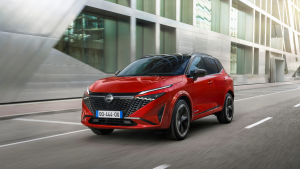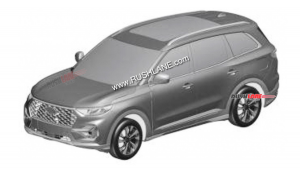2020 Ducati Panigale V2 first ride review
Back in 2016 the Ducati 959 Panigale was no less than a revelation. It was everything you wanted a litre-class superbike to be, minus the brutality and cumbersomeness associated with 200PS motorcycles. Well, powered by a 950cc V-twin engine, its displacement was almost up there but not quite. This made it an interesting middle ground for riders wanting to upgrade from 600s but not wanting a full-blown superbike. And when I rode the 959 Panigale first, I was impressed with its refinement and performance, but also felt riding it hard called for a lot of physical effort.
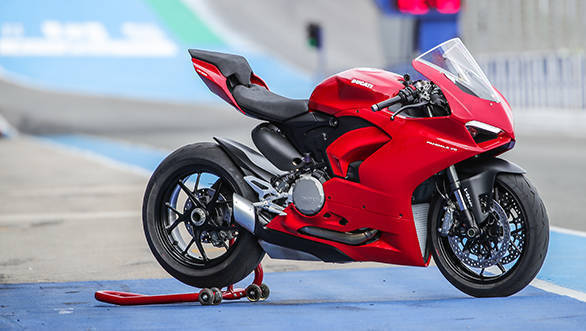
More so, because I rode in the searing heat in the month of May at the Buriram International Circuit in Thailand! The 959 impressed better on the road though, proving to be extremely fast and capable while also feeling reasonably comfortable. And about four years later, we have a replacement in the form of the Ducati Panigale V2.
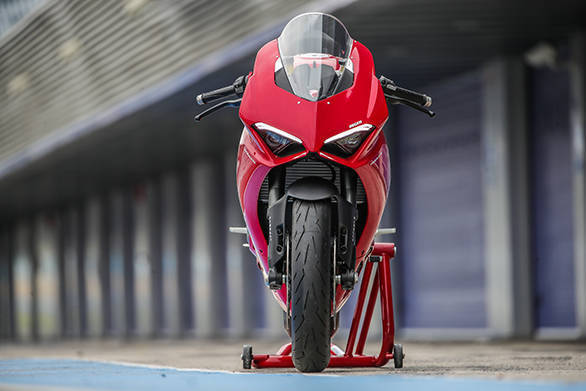
To many, the highlight is the fact that the V2 looks like its elder sibling, the achingly gorgeous Panigale V4. But to me, it's the updates under its skin that are more enticing. The icing on the cake was the fact that we rode the Panigale V2 at the Jerez circuit in Spain, one of the few to host MotoGP and WSBK both!
The design
The Panigale V4 is easily the most beautiful superbike on the planet and also one of the most aspirational ones currently. So it's easy to see why Ducati wanted the 959's replacement to look like it. You effectively get the same face with the headlight projectors sitting deep inside the fairing along with the air intakes and laced with the same V-shaped daytime running lamp strip.
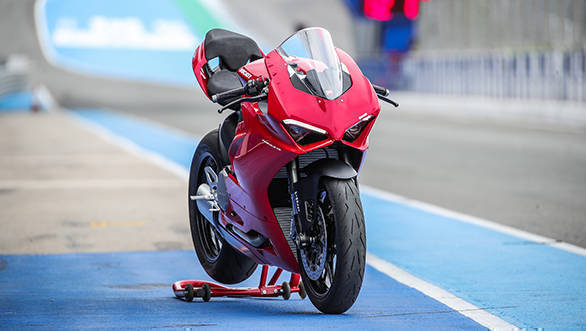
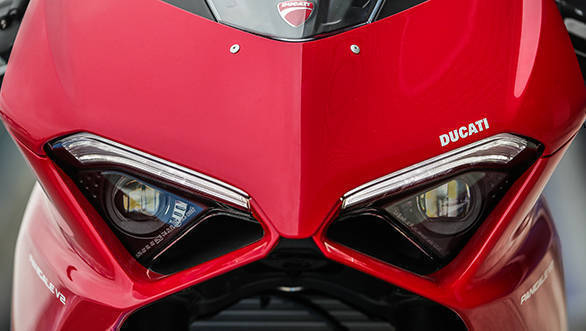
We're told the new fairing design is also more functional as the intake ducts are more efficient. The bike also has a more aggressive stance as the rear monoshock is now 2mm longer, resulting in a more nose down appearance.
The Panigale V2 also borrows the V4's crisp 4.3inch TFT display which offers lots of information, arranged very neatly. There are changes to the ergonomics as well product presentations hinted towards a more track-focussed motorcycle, but Ducati has increased the length of the rider's seat by 20mm and the foam padding is 5mm thicker, resulting in better comfort.
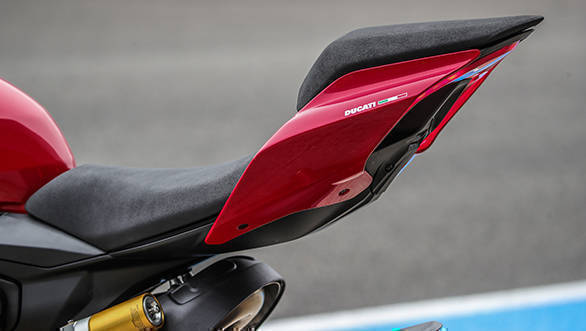
Build quality is as premium as it gets, so the V2 feels as well-built and well-finished as its elder sibling. The V2 also borrows the V4's single-sided swingarm and gets a short, underslung exhaust unlike the 959's side-mounted dual exhausts. The tail piece is the same as the V4 too and the V2's rear certainly looks far more appealing than the 959's.
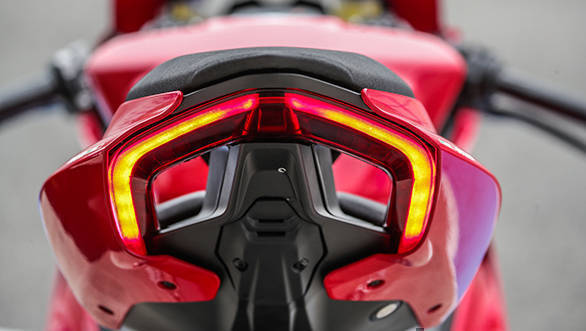
The engine
The Panigale V2 uses the same, 955cc, 90-degree V-twin engine as before but the motor has received comprehensive updates to offer better performance and meet stricter, Euro V norms. Outputs are up to 155PS (up by 5PS) and 104Nm (up by 2Nm), thanks to revised internals as also the new, more efficient air intakes and new injectors and Ducati claims the V2 offers over 60 per cent torque consistently over 5,500rpm. The engine is also super eager to build revs just like before and feels extremely refined even when close to the redline.
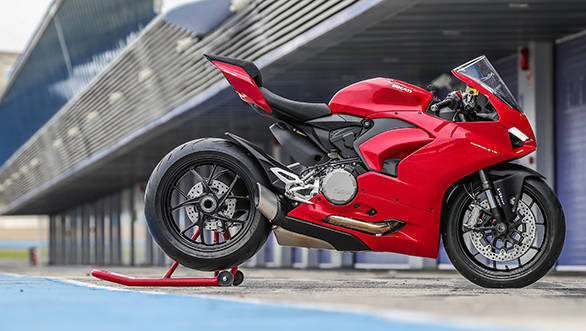
The electronics
Ducati has equipped the Panigale V2 with some of its latest rider aids, many of which have trickled down from the V4. The V2 benefits from the addition of a Bosch-sourced six-axis IMU now which has allowed the addition of wheelie control and cornering ABS. The Panigale V2 also runs Ducati's latest generation traction control or DTC EVO 2, as also DQS EVO 2 or Ducati Quick Shift (bidirectional) and Ducati EBC EVO or engine brake control.
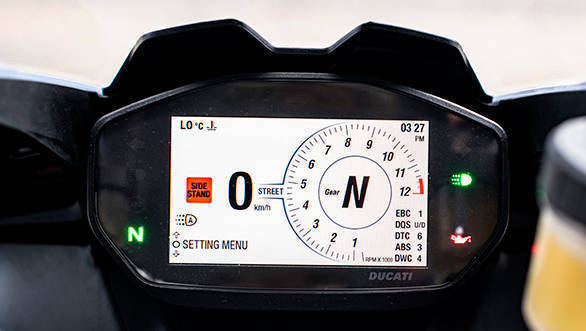
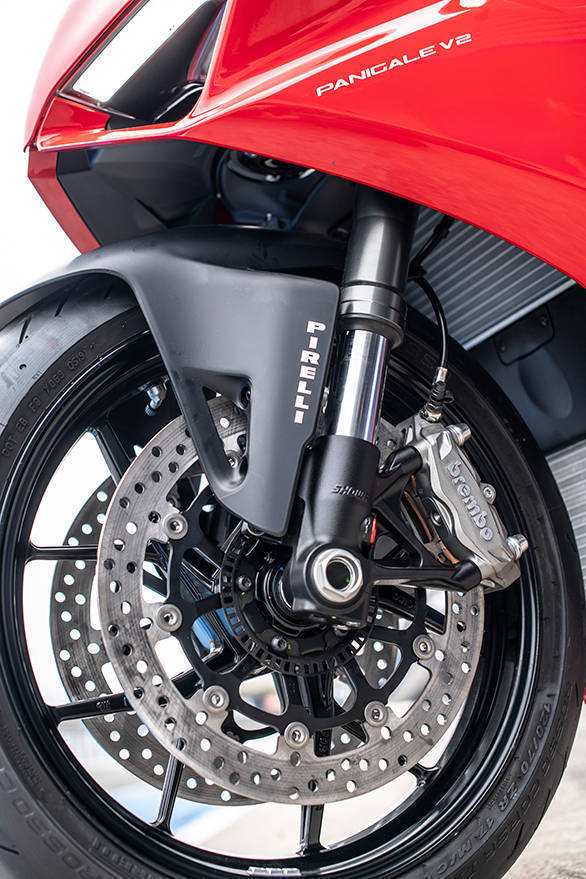
ABS has three settings. Level 1 has ABS work on the front wheel only, without cornering function. Level 2 has no rear lift-up detection and allows braking really hard and late into corners, along with a 'slide by brake' function that lets you slide the rear using the brake, making you look like a MotoGP star! Level 3 has the nannies in full action and is meant for the road or low grip conditions.
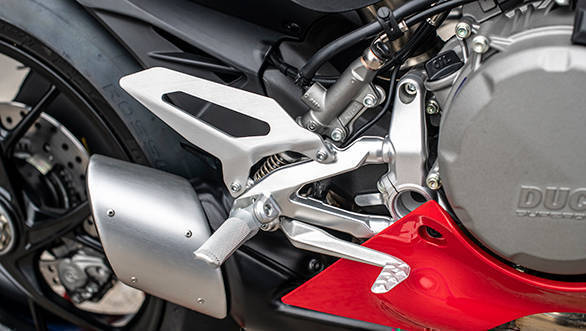
DTC EVO 2 has been derived from Ducati's MotoGP machine and the Panigale V4 R. It works faster than before in terms of detecting wheel slip and offers smoother intervention, which as I found out on track resulted in smoother, quicker corner exits. Riding modes include Race, Sport and Street all three offer the full 155PS though delivery in Sport and Street gets progressively softer. Electronics are pre-set in each mode though riders can customise settings individually.
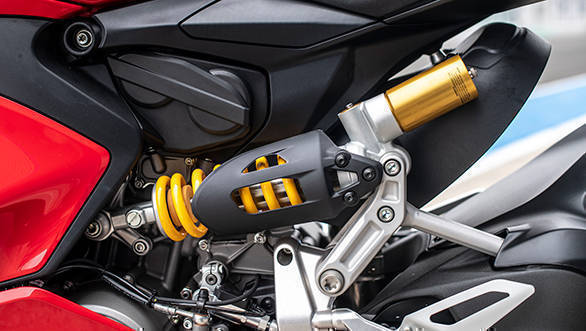
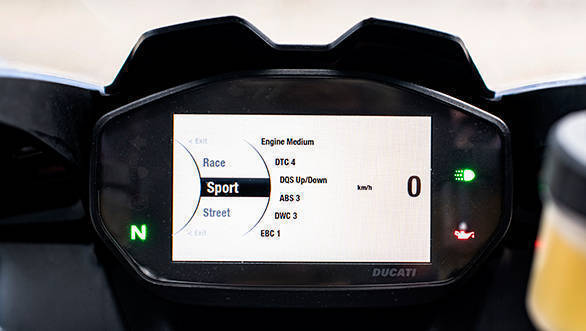
The riding experience
The corners at Jerez are fast and flowing but the circuit is not very wide, making for a good handling test. One of the first things I noted on track was that the Panigale V2 called for lesser effort than the 959 Panigale, courtesy the revised steering geometry. Moreover, the V2 is 2kg heavier at 200kg kerb, but from the saddle it felt lighter and easier to manoeuvre. The realisation was almost instantaneous, as was the one that throttle response is crisp and precise and the power delivery, explosive. At the same time performance felt friendly and at no point did I feel the bike trying to spit me off, certainly a positive for a 155PS machine.
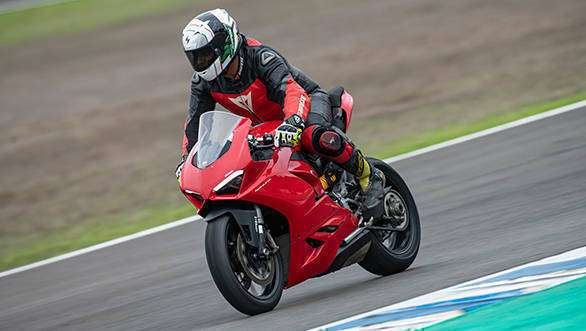
The engine's eagerness to put its power down is addictive and the Panigale V2 seemed to make light of the corners at Jerez. The chassis and suspension goaded me into going faster with each lap, of course with tonnes of help from the electronics. The revised suspension set-up deserves a mention too. The V2 runs the same 43mm Showa big piston upside-down forks up front as the 959 but with revised settings. The Sachs monoshock is essentially the same too but 2mm longer and has helped in weighing the front down better, helping improve the handling. The suspension and steering damper are fully adjustable, which should allow experienced track junkies to tune the bike better.
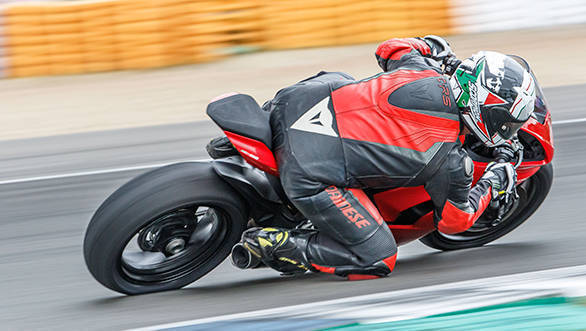
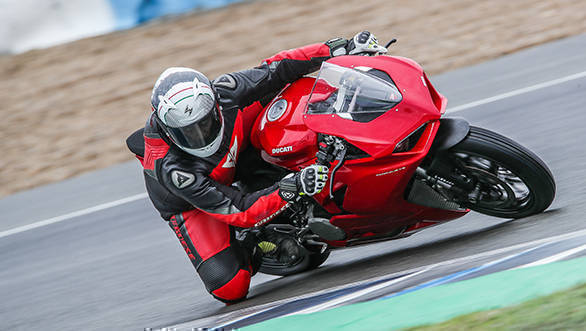
We rode the Panigale V2 with Pirelli Supercorsa tyres, though the bike will be offered with Rosso Corsa III tyres out of showrooms. The Supercorsas offered tonnes of confidence and feedback, especially at the rear, which was certainly welcome each time the rear began sliding at corner exits. The electronics helped rein it in well, making me feel like a pro and admittedly, the Panigale V2's engineering team deserves serious appreciation for the bike's dynamic set-up and electronics.
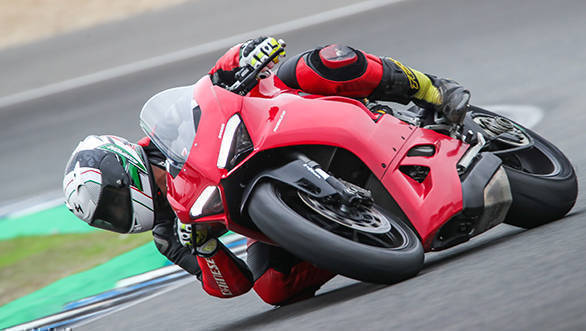
However, just as we were getting to know the bike and circuit both, the rain gods showed up and we had to wait for a while before the rain tyres were brought out. These were WSBK-spec rain tyres from Pirelli! It was my first time ever on rain tyres and the confidence they offered in conjunction with the electronics was excellent. The track wasn't soaked but wet enough to call for caution. The Panigale V2 offered ample confidence, though, to hit over 200kmph down both straights at Jerez, brake hard and also lean deep into corners.
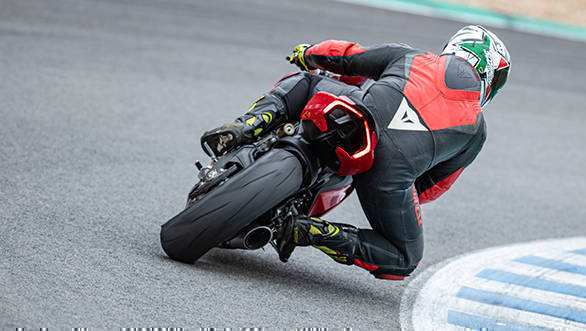
Overall, the Panigale V2 feels easy to ride hard right from the word go and is also surprisingly easy to get used to. The brakes impressed with their feedback and progressive feel, though I think experienced riders will want some more bite from Brembo's M4.32 monoblock callipers each time they bite into the 320mm discs up front.
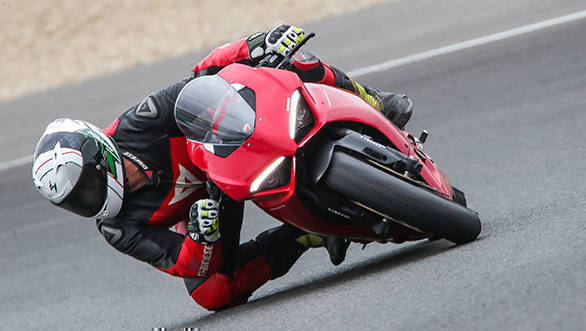
First impressions
Our track sessions might have gotten truncated due to the unfavourable weather but my biggest takeaway from them was that the Panigale V2 is a lot easier and friendlier to ride than its predecessor. This in effect will make track sessions less tiring and help riders focus better on going faster for longer durations. And that's what matters the most. Engine performance is well-balanced as it is explosive yet friendly, while dynamics will allow riders to push harder.
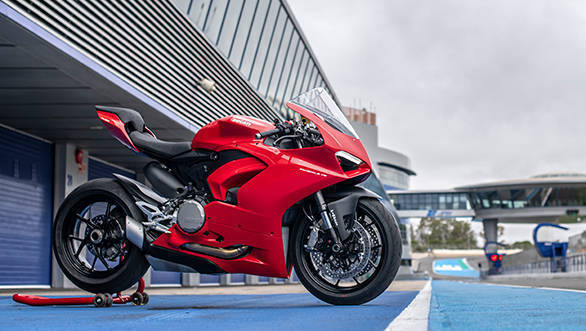
Electronics are top-notch as well and overall, Ducati has hit the nail on the head in terms of packaging its smaller superbike better. The Panigale V2 is slated to be launched in India around July 2020 and when it does, I hope prices don't get bumped up from the 959 Panigale's current price tag of Rs 15.30 lakh ex-showroom, as it has immense potential to attract a wide range of riders with its alluring design and performance both.
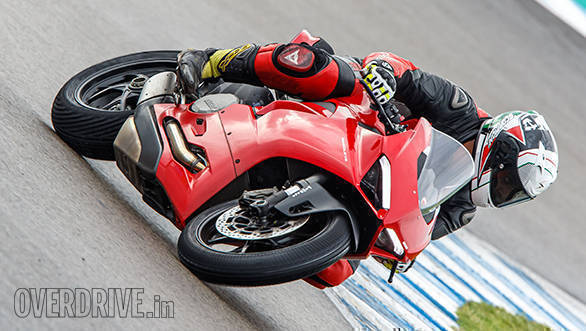
Starts Rs 15,30,000
1103cc
6-Speed
214.00
124.00
-NA-
Starts Rs 16,99,000
955cc
6-Speed
155.00
104.00
-NA-
